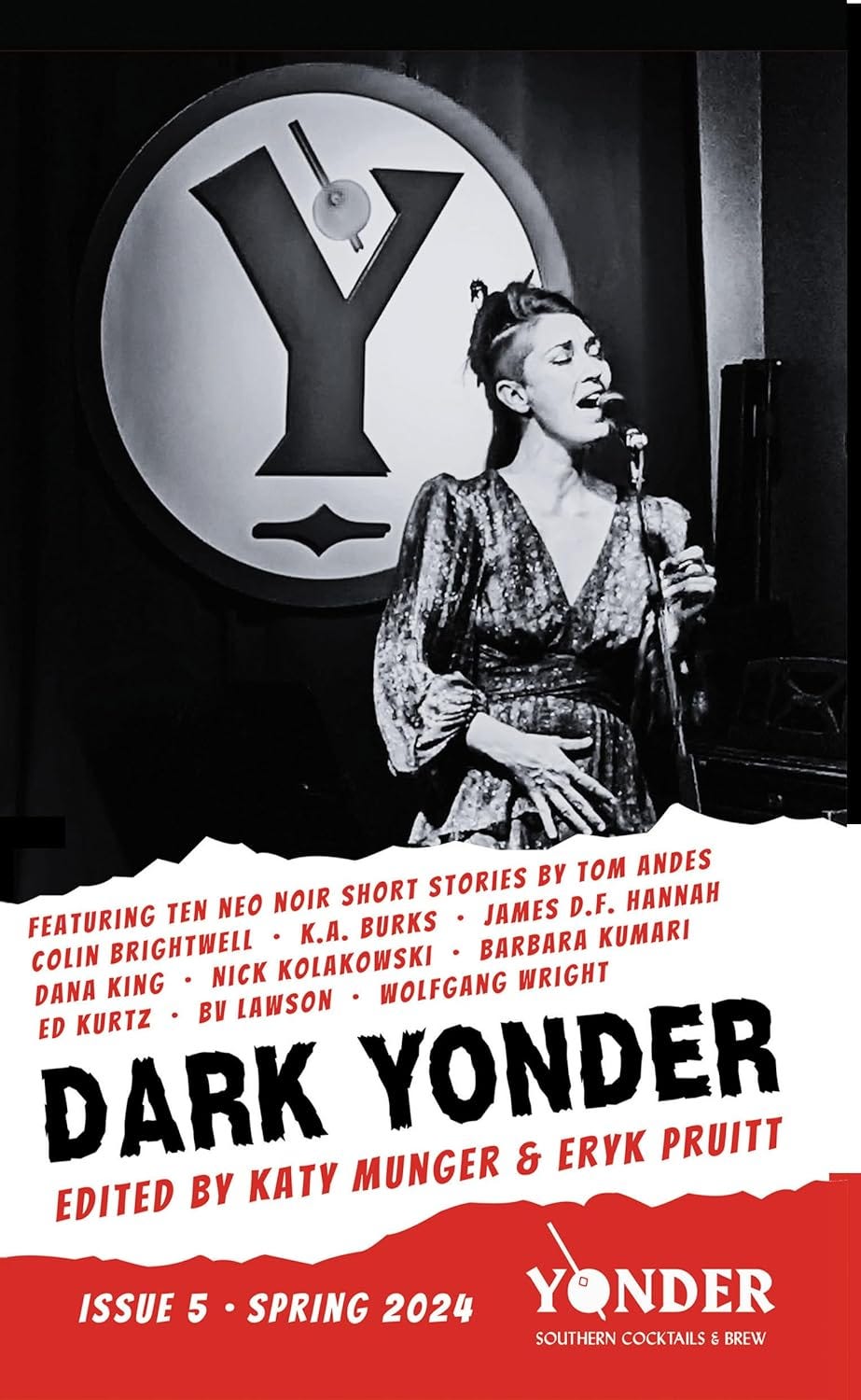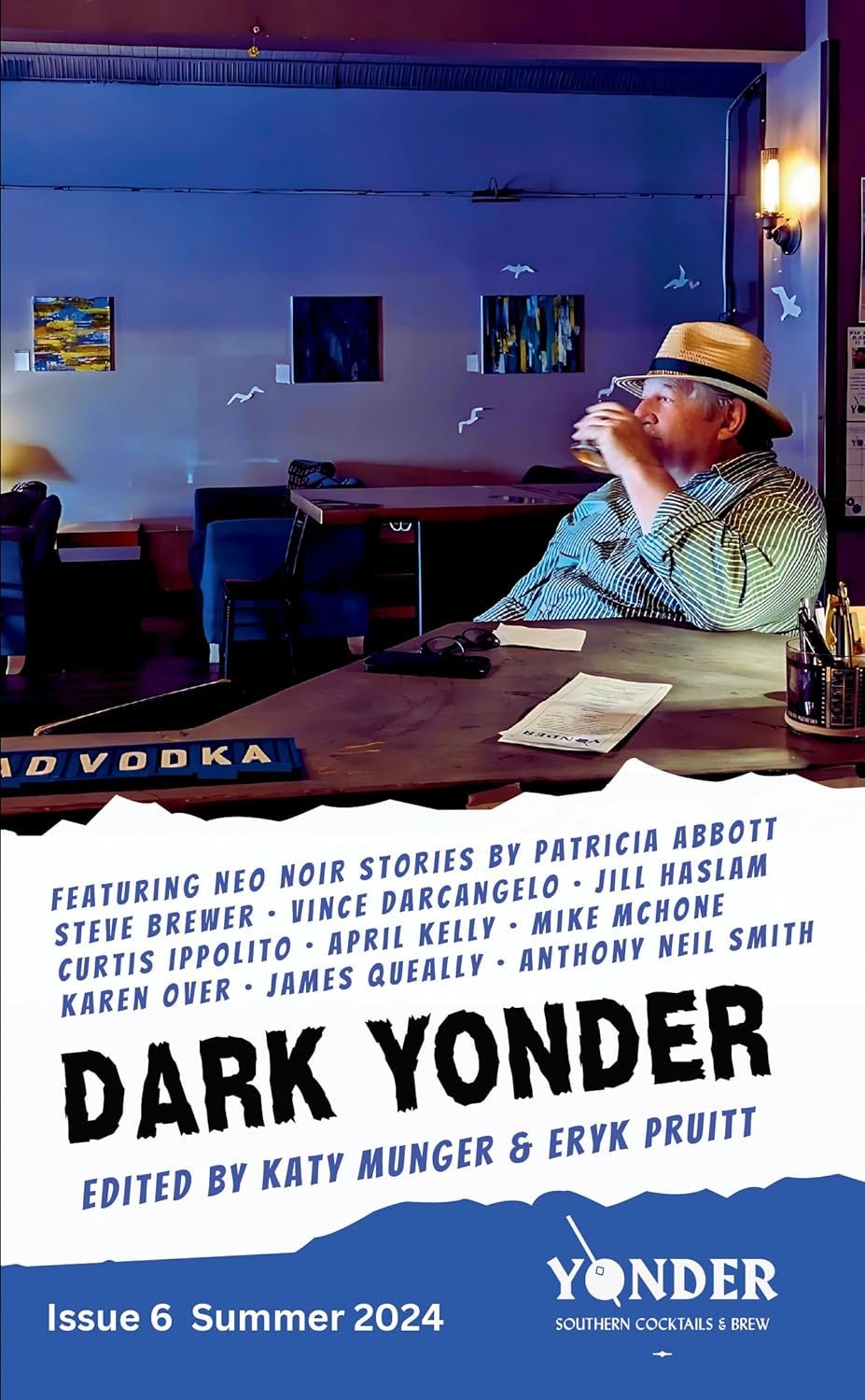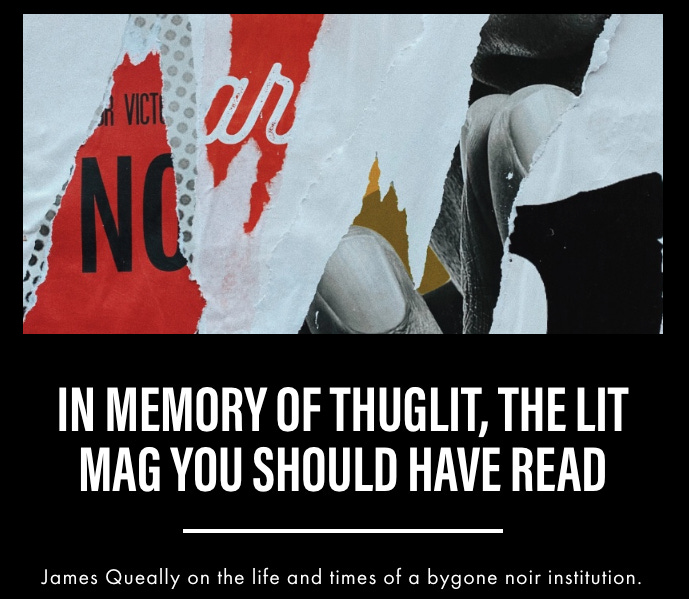#20: Five for Them, One for Me, with Delia C. Pitts
Delia C. Pitts' latest, TROUBLE IN QUEENSTOWN, is out now.
I met Delia C. Pitts for the first time at Minneapolis Bouchercon in 2022. I was particularly excited to meet Delia because I was such a fan of her story “The Killer,” which has been selected for the previous year’s Best American Mystery and Suspense. It’s a fantastic story, taut and beautifully written, packing more character insight and social observation into a few pages than most writers could do in an entire book.
I will acknowledge I might have had a drink or two by then, and Delia, with the patience of a saint, still talked to me for a half-hour in that hotel lobby, discussing not just “The Killer” but her own writing and influences and publishing journey. It was a wonderfully generous gift of her time that solidified me as a fan of hers for life, and also as someone I’m always thrilled to see at events.
After six books in her Ross Agency series, Delia is kicking off a new series with TROUBLE IN QUEENSTOWN, featuring brash P.I. Evander “Vandy” Myrick. TROUBLE IN QUEENSTOWN is a thrilling series debut—a classic PI novel with wonderfully complicated protagonist and a sharp, knowing eye turned toward hot-button issues such as family, class, and race.
Delia’s the latest Five for Them, One for Me.
Let’s go.
FIVE FOR THEM
1. Your new book is called TROUBLE IN QUEENSTOWN. What was the origin point for the story?
I’ve lived for over two decades in a small town in central New Jersey, surrounded by corn and soy fields, a few miles from Princeton to the west and the Jersey shore to the east. From the moment I arrived here I was impressed by the diversity of this small community. When our sons entered high school, we learned that over fifty languages were spoken in the school district, a fact that blew my mind as it ran so counter to the conventional view of small-town America as placidly monocultural. Right now, I live within walking distance of a synagogue and a major mosque, with the largest Hindu cultural and religious center in North America located in the next town over. Trouble in Queenstown began from my determination to twist the tropes of small-town mysteries to reflect the tremendous diversity of race, religion, language, and culture I find in my own little spot in New Jersey.
2. Evander “Vandy” Myrick is a wonderful protagonist: smart, strong, slightly self-destructive, with a complicated personal and emotional life. She exists as a classic PI but also as her own individual. Talk a little about her creation and building her as a character.
My cousin Esther Myricks ran a small security agency on Chicago’s South Side when I was growing up; so, as I thought about tackling and shredding some of the conventions of the PI genre, I wondered how would a smart, tough Black woman like Esther handle the case load of a small-town private investigator. Certainly, my cousin wasn’t involved in the kind of gritty, blood-soaked cases I invented for my novel. But Esther’s drive and wit provided the inspiration for the character and profession of her namesake. I wanted nothing to come easy for my detective Vandy Myrick, so I gave her a heart-rending personal calamity to wrench her from her middle-class complacency as we meet her at the beginning of the story. And I made her father a vexing figure of power and poignancy whose present limitations and past foibles affect Vandy’s pursuit of her case. But I also made Vandy self-aware, smart and smart-mouthed, messy in relatable ways and sexy to boot. I also thought it was important to give Vandy a circle of resilience, a tight group of women friends she could count on to support her through the toughest times. I call these women the Three Furies because they give plenty of side-eye, but no way would Vandy survive without her boss, her assistant, and her bartender. With this group as back-up, I turned the old PI cliché of lone wolf operator inside out to make Vandy a collaborative figure with reliable allies.
3. TROUBLE IN QUEENSTOWN is the start of your second PI series, following your Ross Agency series. There’s been an on-going discussion for more than two decades that the PI novel is dying, and yet the field and the genre seems to continue to grow and diversify. What brought you to the PI novel, and what keeps you writing them?
I came to love the PI genre the way I imagine most people did: first falling hard for Sherlock Holmes; graduating to Hercule Poirot (I never read the amateur Miss Marple); then on to the tough cases of Dashiell Hammett, Raymond Chandler, and Mickey Spillane. What drew me to these stories was the independence and bull-headedness of the detective. No bosses or rules, no rank or societal expectations to limit him. No judges, captains, or laws to curb his singular pursuit of justice as he defined it. Film noir also filled my fondest childhood nights. I craved any movie with Alan Ladd, Humphrey Bogart, Dana Andrews, or John Garfield. I wanted to read about characters who danced on the line between convention and lawlessness. People who recognized that doing the right thing didn’t always mean sticking to the law. I liked wounded champions fighting for neighbors whose problems were overlooked or scorned by the wider society. And of course, eventually I wanted to take those tropes I adored and wrench them to fit new characters who didn’t look like the traditional PIs I’d grown up with. So I wrote my own stories filled with private eyes who were Black, or mixed race, or physically impaired, or middle-aged, or women.
4. The Ross Agency series was set in Harlem. Here you move to Queenstown, described as “nine thousand souls crammed into twelve square miles, fenced by cornfields, warehouses, pharma labs, and tract housing.” I know for my own books, set in southern West Virginia, it presents its own set of problems when you place characters in a smaller community. What were the challenges but also the benefits of Queenstown as a setting?
As you know, resources are squeezed in a small town. The police force is tiny and of limited utility. Privacy is a rare commodity. Rank and privilege are doled out in pitiful portions. Geographical constraints are real. These challenges made moving Vandy through Queenstown in pursuit of her case tough. She is a prodigal daughter returned, but her history and ties are deep and well-known by many of her neighbors. This unwanted exposure hinders her work, but also gives her unexpected avenues of inquiry. She knows she can tap the town’s leading hair dresser for inside information. She can recruit help from her old high school connections by tugging on sentimental ties. She understands the complex racial algorithms that govern relationships in her town.
5. Let’s talk about tone—because Vandy is undeniably funny, but as a writer you’re never afraid to go dark, or to touch on issues such as race and social inequity. Can you speak a little on how you maintain that balance and why it’s important to you?
Thank you for saying Vandy is funny! I wasn’t always sure if her sharp, wise-ass takes on people and situations would land as amusing. Or as bitter and cynical. I wanted Vandy to have access to the language she acquired through her middle-class upbringing and her college education. She is comfortable riffing on analogies and imagery she has learned from Black gospel songs and Shakespeare. She appreciates when someone recites Robert Frost to her. She knows chess and double-Dutch rope jumping. She is enriched by the variety in her own family background and the diversity of her town. I wanted to make race, status, and history the issues which underpin the murder case that unfolds in Trouble in Queenstown. Writing about contemporary America without including those topics would hollow out the story. I think Vandy’s vibrant character and her take-no-prisoners physicality bring lightness to a story that might otherwise be grim and sluggish with melancholy. Vandy is wise, messy, sharp-tongued, and still learning her new trade of private investigator. That combination of vulnerability and wisdom makes her story fun to tell and, I hope, fun to read.
ONE FOR ME
You have a doctorate in African history. What’s your favorite historical fact?
One of my favorite historical moments is the reign of Mansa Musa, the fabulously wealthy ruler of the Mali Empire of West Africa. Musa, who ruled from around 1312 – 1327 AD, governed a territory that included over 400 cities. Mana Musa’s fame was cemented when he made the pilgrimage to Mecca in 1324-25. His entourage included 60 thousand men, each carrying several pounds of gold. Arriving in Cairo, Musa stunned the sultan and citizens with a lavish dis-lay of power, pagentry, and wealth. It was reported that as he travelled, Musa built a new mosque every Friday. Upon his return to Mali, Mansa Musa established Timbuktu as a major international center of learning, culture, trade, and governance. He recruited scholars from around Africa and the Middle East to the city.
SHAMELESS SHILLING (SORT OF)
Do not ask me how this happened—it wouldn’t if I got this newsletter out on a more regular schedule—but I had a story come out in DARK YONDER over the summer and never mentioned it here.
In “Nothing More and Nothing Less,” former coal executive Carl Decker was once one of the most powerful men in West Virginia—until a mine accident kills 29 men. Years later, Decker’s traveling the state, trying to tell his side of the story. In one particular town, however, the residents might not be buying what he’s trying to sell.
It’s been so long since this issue came out that editors Eryk Pruitt and Katy Munger have already published another issue. As with every issue so far, it’s a banger, folks.
DARK YONDER carries on the tradition of noir journals such as NEEDLE and THUGLIT—places that carried the earliest work of writers such as S.A. Cosby, Jordan Harper, Hilary Davidson, and Rob Hart. In every issue you’ll find writers from those other magazines’ pages—names such as Ed Kurtz, James Queally, and Nick Kolakowski—as well as rising stars like Colin Brightwell, Curtis Ippolito, and Mike McHone.
(Sure, Eryk and Katy let me in there, but nobody’s perfect, okay?)
Like ROCK AND A HARD PLACE and VAUTRIN—other publications giving home to explorations of the darker side of life—DARK YONDER provides a wonderful sampler of the best crime and noir writing out there, and you should be checking it out.
Speaking of James Queally (author of the excellent Russell Avery series) and THUGLIT:
Back in June, James wrote a great tribute to THUGLIT over at Crime Reads, talking to a variety of the writers who published in its pages. It’s damn nigh impossible to overstate how important THUGLIT and its editor, Todd Robinson, are to the current state of crime fiction. In talking to Robinson and various writers from the history of THUGLIT, James captures what made the magazine so special, and why it’s remembered so fondly, and it should be remembered more widely.
I came to the party too late, and I missed the chance to publish in THUGLIT; it’s a regret I’ll carry to the grave.
If you’re so inclined, and you want to see the foundation of so many great writers, you can still get issues of THUGLIT on Kindle for less than two bucks, and frankly, you oughta.
That’s all we’ve got for now. Thanks for coming. See you next time, and hey, let’s be careful out there.









I love this conversation, James! And now I'm off to read Delia....